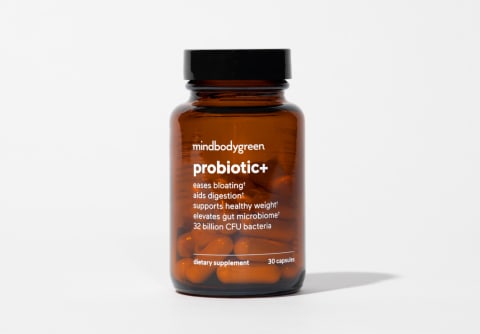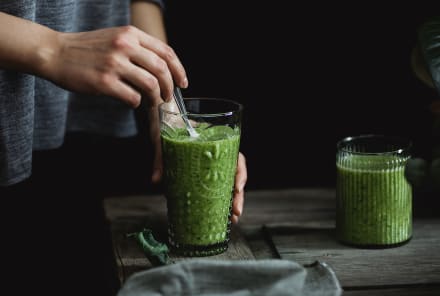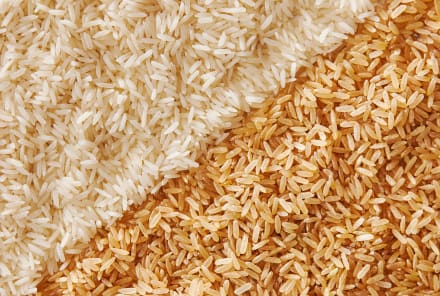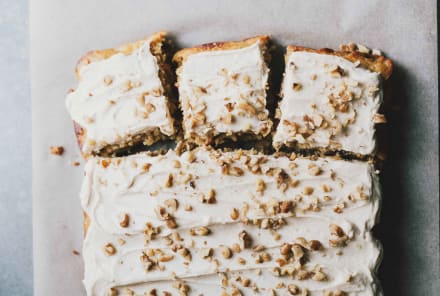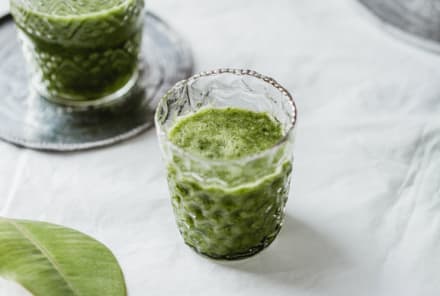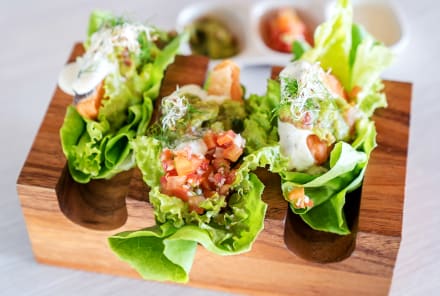Advertisement
This Gut-Healing Drink Tastes Like Soda & Is WAY Easier To Make Than Kombucha

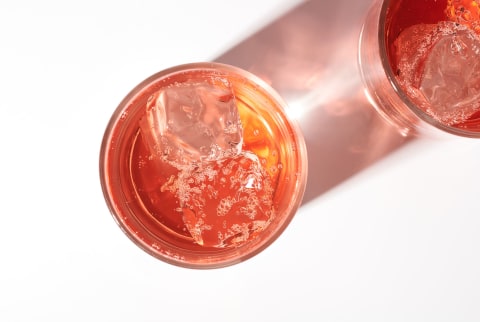
While kombucha has long been known and beloved in the wellness world, it has a cousin with less notoriety—water kefir. Water kefir is similar to kombucha in that it's a fermented drink you can brew at home and infuse with any number of fun flavors, but it's a different process that has a few key advantages over the popular drink.
How is water kefir different from kombucha?
While kombucha requires tea (either white, green, or black) for its fermentation process, water kefir is fermented with any type of sugar water, juice, or even coconut water. This means that kombucha will always contain caffeine. While it's not much—about one-third to one-half of the caffeine in the tea that the 'booch is brewed with—it can still add up, particularly if you're trying to avoid caffeine entirely (like this doctor thinks everyone with anxiety should). Water kefir is always caffeine-free.
Kombucha also contains trace amounts of alcohol. While it's required by law to be less than 0.5% for bottles distributed nationally, it can still be enough to deter anyone who is 100% sober. Water kefir is—you guessed it—completely alcohol-free.
What's in water kefir?
What does water kefir actually have in it, then? Kefir grains, which aren't grains in any way but rather small bacteria and yeast clusters named for their grain-like appearance. They're the same grains used to ferment dairy kefir, which you can find in many grocery stores (it's like a more liquid-y yogurt). The grains are submerged in a sugary liquid and left to ferment for 24 to 48 hours. You can then strain out the grains and reuse them indefinitely. The fermented liquid will be rich in beneficial bacteria, including Acetobacter fabarum, Bifidobacterium psychraerophilum, Lactobacillus nagelii, Lactobacillus casei, and Leuconostoc mesenteroides.* If you want even more of that soda-like flavor, you can then do a second ferment, where you add in different types of flavorings. You can make a cream soda with vanilla extract, or channel diner culture by making a celery soda with trendy celery juice.
What about the sugar content?
While you do need a sugar-filled beverage to start your water kefir, the sugar is there to be consumed by the bacteria, so very little will remain in the drink that you actually consume. If you want less sugar, do a longer fermentation time (closer to 48 hours), to give the bacteria more time to do their job. A second ferment with fruit juice (say, if you add grape juice to make grape soda) will add more sugar as well.
Want to make your own water kefir at home?
You'll need water kefir grains, which are easily ordered online for less than $20 (we like this brand), a fine-mesh strainer to remove the grains from the fermented liquid (something like this would work well), and a large jar to store your water kefir in.
To make the water kefir, just fill a half-gallon jar with 4 cups of room temperature water. Stir in ¼ cup of sugar until it dissolves (alternatively, you can use fruit juice and skip the sugar—the juice will have enough sugar to feed the bacteria). Add the ¼ cup of kefir grains and cover loosely (with a lid that's not left on all the way or a thin kitchen cloth), and let sit at room temperature for 24 to 48 hours.
Strain out the kefir grains and add them to new a batch. You can drink the water kefir as is or do a second ferment, which allows you to add flavor and make it fizzier.
If you're doing a second ferment, add the strained liquid to a jar with fresh muddled fruit, herbs, vanilla extract, juice—the sky is the limit. Cover this one tightly with a metal lid, and leave on the counter for 24 hours, unscrewing the lid to "burp" the jar a few times in the day. When it's fizzy, transfer it to the fridge and enjoy!
Watch Next
Enjoy some of our favorite clips from classes
Enjoy some of our favorite clips from classes
What Is Meditation?
Mindfulness/Spirituality | Light Watkins
Box Breathing
Mindfulness/Spirituality | Gwen Dittmar
What Breathwork Can Address
Mindfulness/Spirituality | Gwen Dittmar
The 8 Limbs of Yoga - What is Asana?
Yoga | Caley Alyssa
Two Standing Postures to Open Up Tight Hips
Yoga | Caley Alyssa
How Plants Can Optimize Athletic Performance
Nutrition | Rich Roll
What to Eat Before a Workout
Nutrition | Rich Roll
How Ayurveda Helps Us Navigate Modern Life
Nutrition | Sahara Rose
Messages About Love & Relationships
Love & Relationships | Esther Perel
Love Languages
Love & Relationships | Esther Perel
